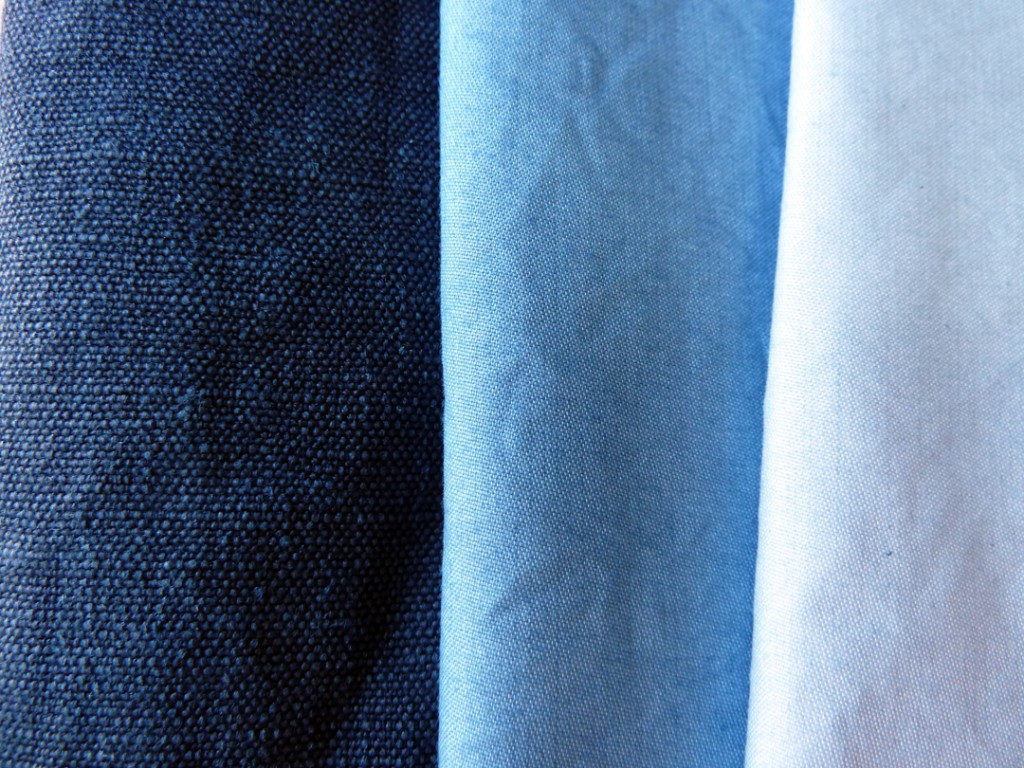
Each week, we are emailed with questions from our natural dye community asking simple and complex questions that we thought might be worth sharing. Here are a handful from this week answered by natural dyer in chief, Kathy Hattori, Founder of Botanical Colors:
I am trying to dye large pieces of both linen and wool fabric (36″ x 56″) but I am having trouble with streaking. Do you have any tips on how to get a more even appearance? I believe part of my problem is keeping all the fabric submerged, it just keeps wanting to bubble up. I stir often with the linen, but with the wool I’m afraid of it felting if I agitate it too much. Should I weight down the fabric with something?
The common causes for streaking, or blotchiness when dyeing fabric come from the following conditions:
- Too much fabric in too small of a pot. The fabric should move easily in the dye pot.
- Not enough water in the pot.
- The water temperature is too hot when you put the fabric in the pot, and the dye strikes unevenly. Try adding the dissolved dyes to the pot when the water is barely lukewarm, stir well, then add the fabric and let the dye saturate the fabric before raising the heat.
- The dye isn’t dissolved thoroughly. Make sure you dissolve the dye in enough very hot water and that there are no lumps of undissolved dye in the dye pot.
- When adding the fabric to the dye pot, hold the fabric vertically and push the fabric into the pot at the water line with a spoon. This allows the fabric to enter the water without creating a big bubble. You can also “burp” smaller bubbles out of the fabric when the dye pot is cold; another reason to keep the temperature low when starting out.
- Stir constantly, but not vigorously to avoid felting wool fabrics. You can gently rotate the goods with gloved hands while the dye bath is still warm, and then switch to a heavy spoon or tongs as the dye bath heats up.
I am very interested in your natural dye liquid extracts, but I’m wondering if it would be possible to use them as one would use paints to paint directly onto silk or cotton? I am looking for a natural alternative to these “silk color” dyes and wondering if your liquid extracts could be used in this manner… or if they are strictly to be used for vat dying with water?
The liquid extracts may be used for painting very successfully. Remember to shake the liquids and if you want to thicken the dyes for painting, try our Print Paste Thickener which is an Organic Printing Gum. It is important to set the color once you’ve painted and you can do so by steaming the fabric, or letting it air cure for at least a week to set the color. Also remember that some of the dyes need either heat or curing to develop their full colors, so you may not see the color you envision on the freshly painted fabric but it will develop. I’ve found that steaming after painting, and then letting the steamed fabric dry thoroughly for a week seems to really help the fabric retain deep colors.
